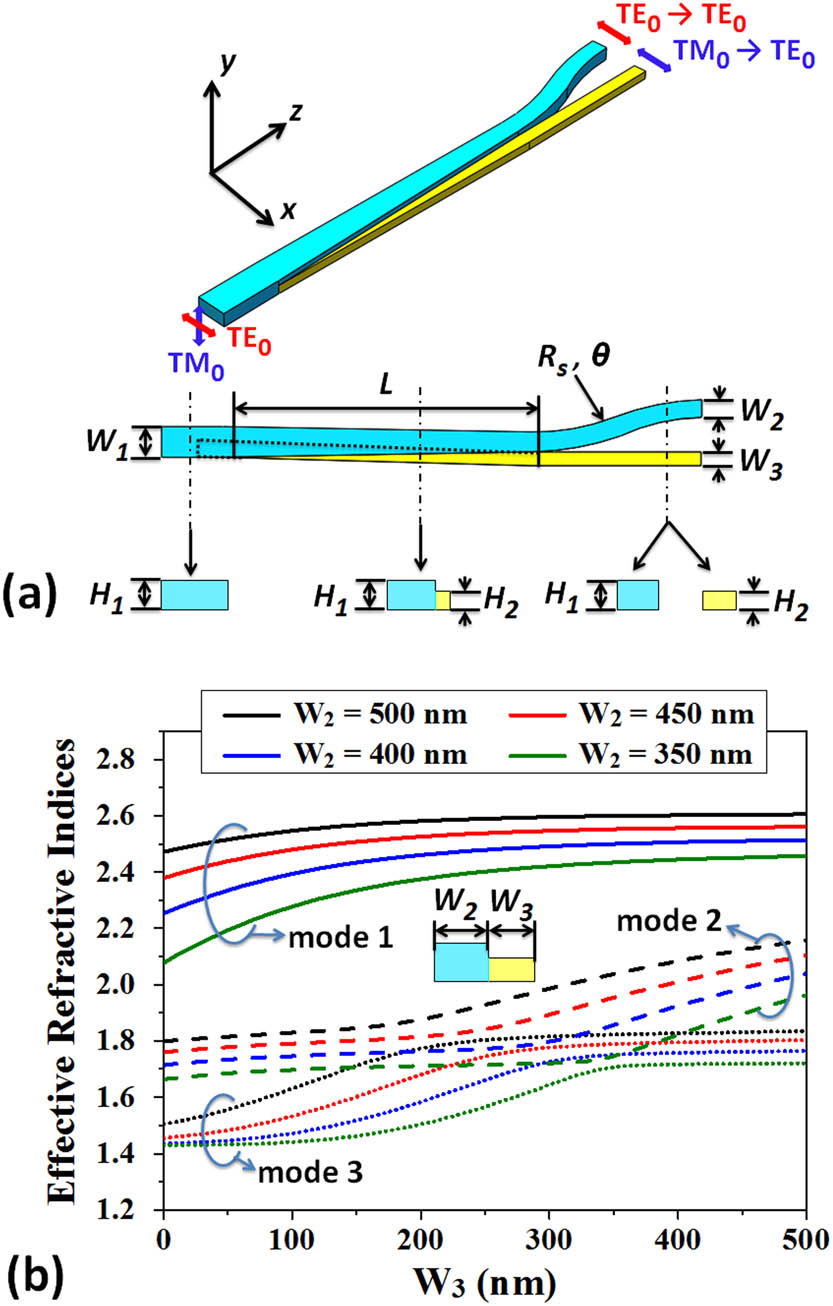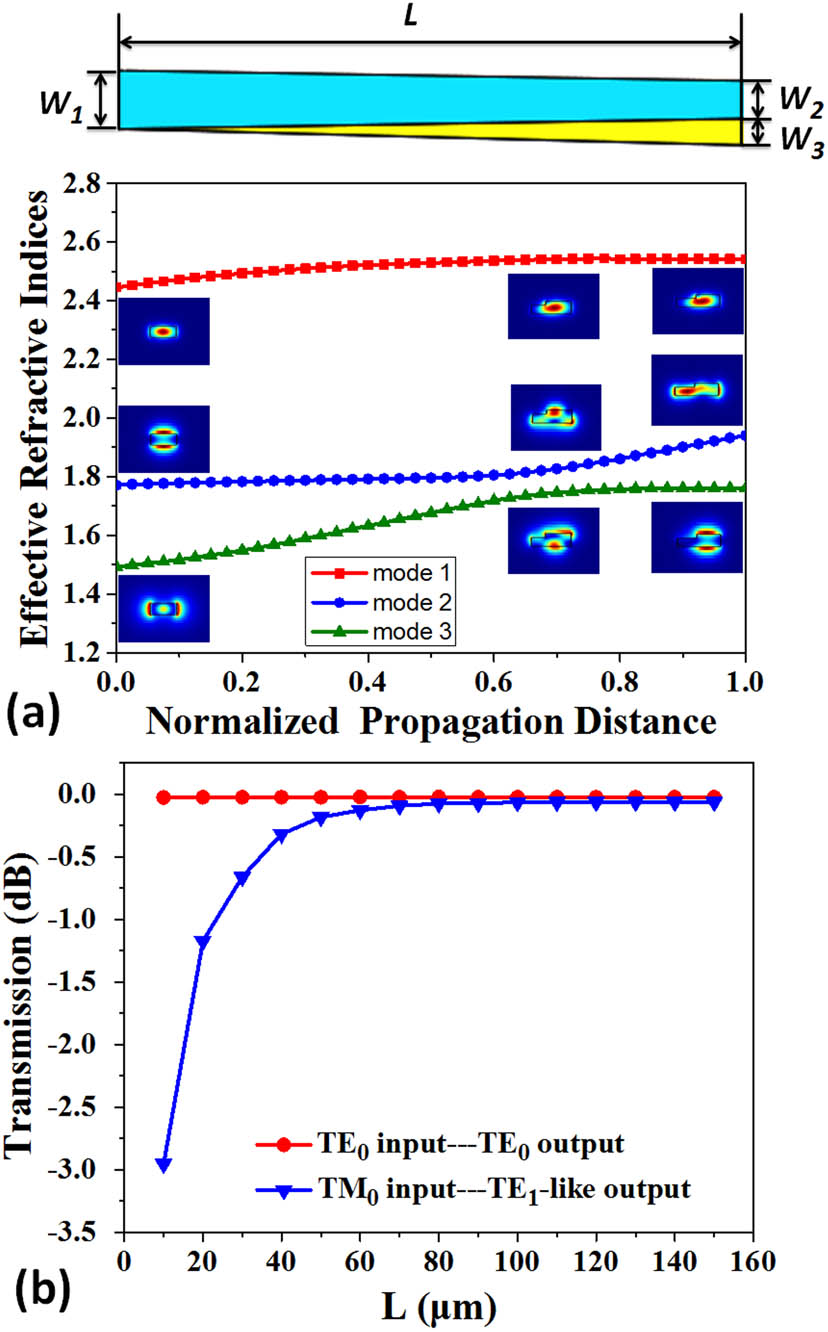Daigao Chen, Xi Xiao, Lei Wang, Wen Liu, Qi Yang, "Polarization rotator-splitter covering full optical communication bands based on L-shaped cross-section waveguide," Chin. Opt. Lett. 14, 041301 (2016)
Search by keywords or author
- Chinese Optics Letters
- Vol. 14, Issue 4, 041301 (2016)

Fig. 1. (a) Schematic of the proposed PRS. Top: three-dimensional view, middle: overhead view, and bottom: cross- section view. The dotted lines encircling the region are the overlap of the two different waveguides. (b) The effective refractive indices of the first three modes of the L-waveguide as the function of the higher waveguide width (W 2 W 3

Fig. 2. (a) Mode indices and profiles evolution along the L-waveguide with W 2 = 450 W 3 = 400 nm
Fig. 3. Average transmission efficiency varied with the radius of the S-bend waveguide of the asymmetrical Y-junction over a wavelength range from 1500 to 1600 nm.
Fig. 4. (a)–(d) Simulated field intensity distributions at 1310 and 1550 nm wavelengths. (e)–(f) Different modes’ outputs efficiencies as a function of the wavelength in the two output ports. Transmission efficiency below − 40 dB
Fig. 5. (a) Schematic of the proposed PRS. Top: before shortening, bottom: after shortening. (b)–(e) Simulated field intensity distributions of the shortened PRS at 1310 and 1550 nm wavelengths. (f)–(h) Different modes’ output efficiencies as a function of the wavelength in the two output ports of the shortened PRS. Transmission efficiencies below − 40 dB
Fig. 6. Simulated the transmission efficiencies varied with (a) the higher waveguide width deviation, (b) the lower waveguide width deviation, (c) the alignment error, and (d) the etching depth deviation. The transmission efficiencies of 1310 nm wavelength are the dashed line, and that of the 1550 nm wavelength are the solid line. The above figures are the TE 0 TM 0 − 30 dB
|
Table 1. Comparison of the PRSs With Bandwidths Greater Than 300 nm

Set citation alerts for the article
Please enter your email address



